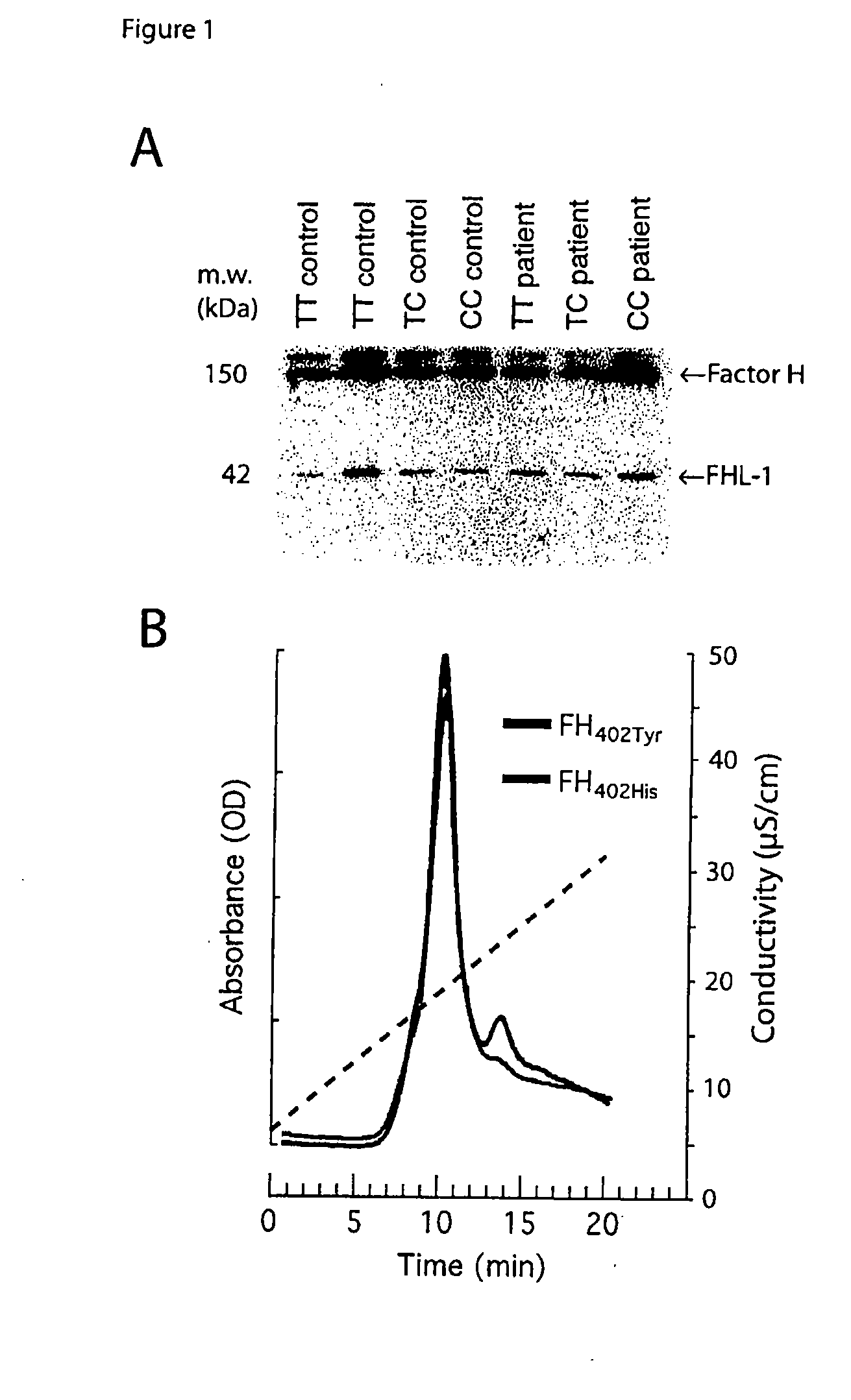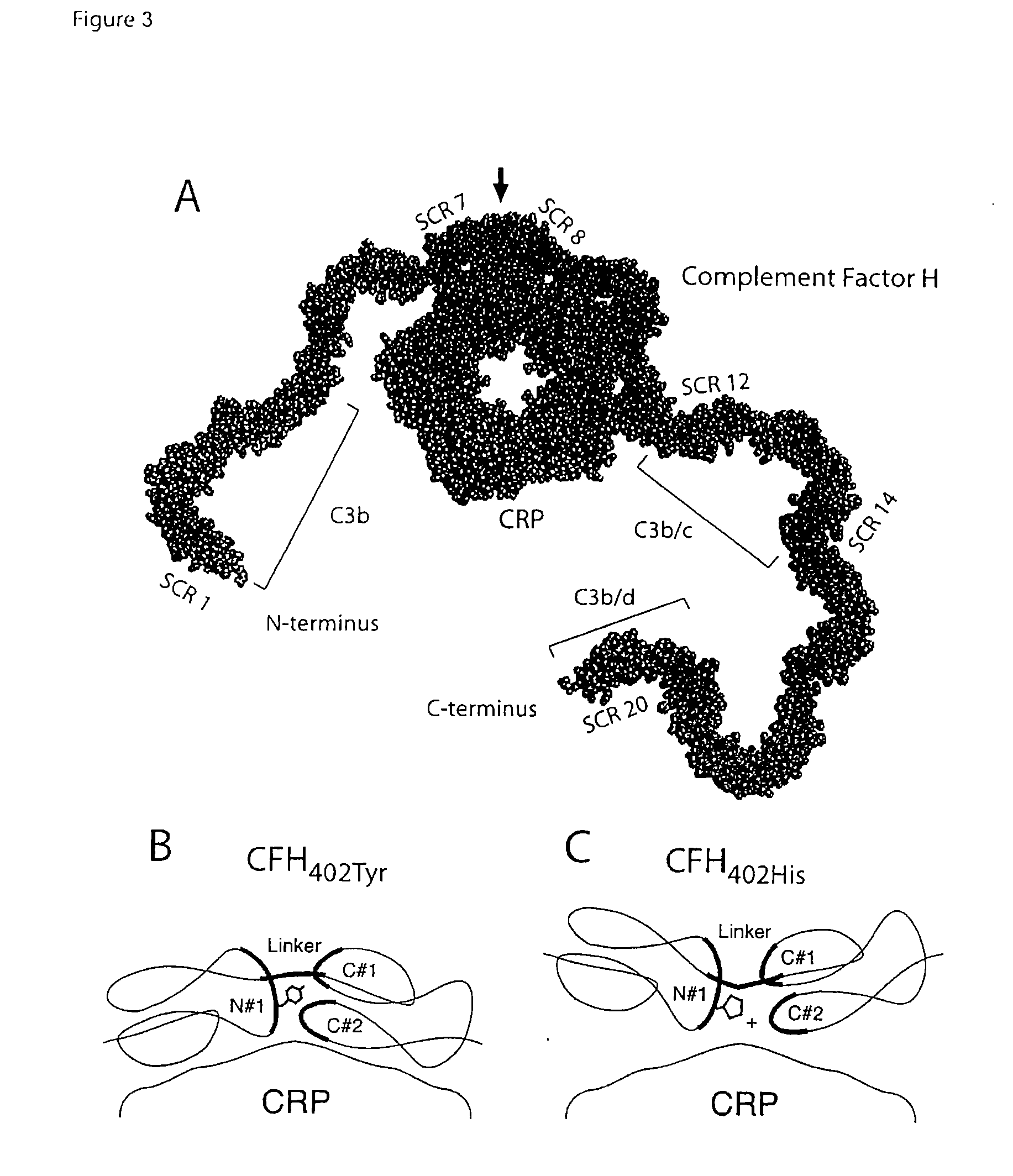Binding of complement factor h to c-reactive protein
a technology of c-reactive protein and complement factor h, which is applied in the field of binding of complement factor h to creactive protein, can solve problems such as loss of visual acuity, and achieve the effect of reducing risk and lowering affinity for crp
- Summary
- Abstract
- Description
- Claims
- Application Information
AI Technical Summary
Benefits of technology
Problems solved by technology
Method used
Image
Examples
example 1
III. Example 1
Pathogenesis of Age-Related Macular Degeneration
Disrupted Binding of Complement Factor H to C-Reactive Protein
[0058]Complement Factor H(CFH) is an important regulator of the alternative complement pathway. The Y402H polymorphism of CFH was recently shown to be associated with age-related macular degeneration, the most common cause of irreversible blindness in the Western world. We analyzed the underlying mechanism by examining the effects of this polymorphism on the functions of CFH. Sera were obtained from 46 AMD patients and 33 age-matched controls, who were genotyped and carefully phenotyped. C-reactive protein (CRP), an acute phase protein, was located in drusen, the characteristic lesions of AMD patient eyes. Purified CFH402H and CFH in the sera of AMD patients homozygous for the CFH402H variant showed a significantly reduced binding to CRP. The Y402H change was estimated to critically affect interdomain orientation within CFH and CFH affinity towards CRP. As CRP ...
PUM
 Login to View More
Login to View More Abstract
Description
Claims
Application Information
 Login to View More
Login to View More - R&D
- Intellectual Property
- Life Sciences
- Materials
- Tech Scout
- Unparalleled Data Quality
- Higher Quality Content
- 60% Fewer Hallucinations
Browse by: Latest US Patents, China's latest patents, Technical Efficacy Thesaurus, Application Domain, Technology Topic, Popular Technical Reports.
© 2025 PatSnap. All rights reserved.Legal|Privacy policy|Modern Slavery Act Transparency Statement|Sitemap|About US| Contact US: help@patsnap.com



